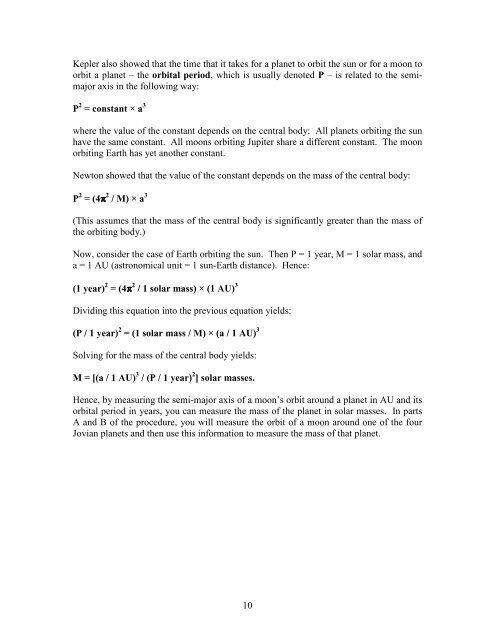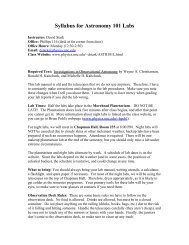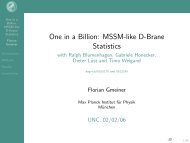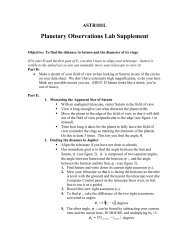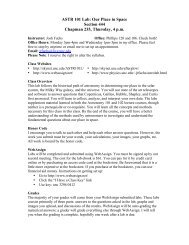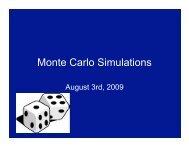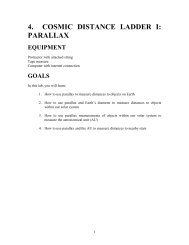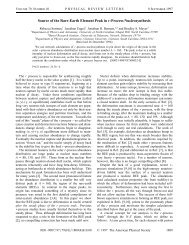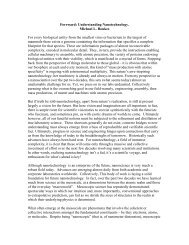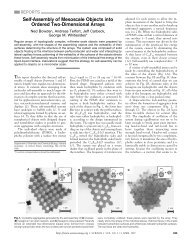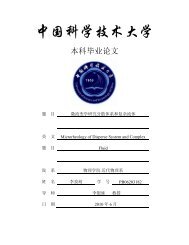3. THE GALILEAN REVOLUTION: EARTH'S PLACE IN THE SOLAR ...
3. THE GALILEAN REVOLUTION: EARTH'S PLACE IN THE SOLAR ...
3. THE GALILEAN REVOLUTION: EARTH'S PLACE IN THE SOLAR ...
Create successful ePaper yourself
Turn your PDF publications into a flip-book with our unique Google optimized e-Paper software.
Kepler also showed that the time that it takes for a planet to orbit the sun or for a moon to<br />
orbit a planet – the orbital period, which is usually denoted P – is related to the semimajor<br />
axis in the following way:<br />
P 2 = constant × a 3<br />
where the value of the constant depends on the central body: All planets orbiting the sun<br />
have the same constant. All moons orbiting Jupiter share a different constant. The moon<br />
orbiting Earth has yet another constant.<br />
Newton showed that the value of the constant depends on the mass of the central body:<br />
P 2 = (4π 2 / M) × a 3<br />
(This assumes that the mass of the central body is significantly greater than the mass of<br />
the orbiting body.)<br />
Now, consider the case of Earth orbiting the sun. Then P = 1 year, M = 1 solar mass, and<br />
a = 1 AU (astronomical unit = 1 sun-Earth distance). Hence:<br />
(1 year) 2 = (4π 2 / 1 solar mass) × (1 AU) 3<br />
Dividing this equation into the previous equation yields:<br />
(P / 1 year) 2 = (1 solar mass / M) × (a / 1 AU) 3<br />
Solving for the mass of the central body yields:<br />
M = [(a / 1 AU) 3 / (P / 1 year) 2 ] solar masses.<br />
Hence, by measuring the semi-major axis of a moon’s orbit around a planet in AU and its<br />
orbital period in years, you can measure the mass of the planet in solar masses. In parts<br />
A and B of the procedure, you will measure the orbit of a moon around one of the four<br />
Jovian planets and then use this information to measure the mass of that planet.<br />
10


